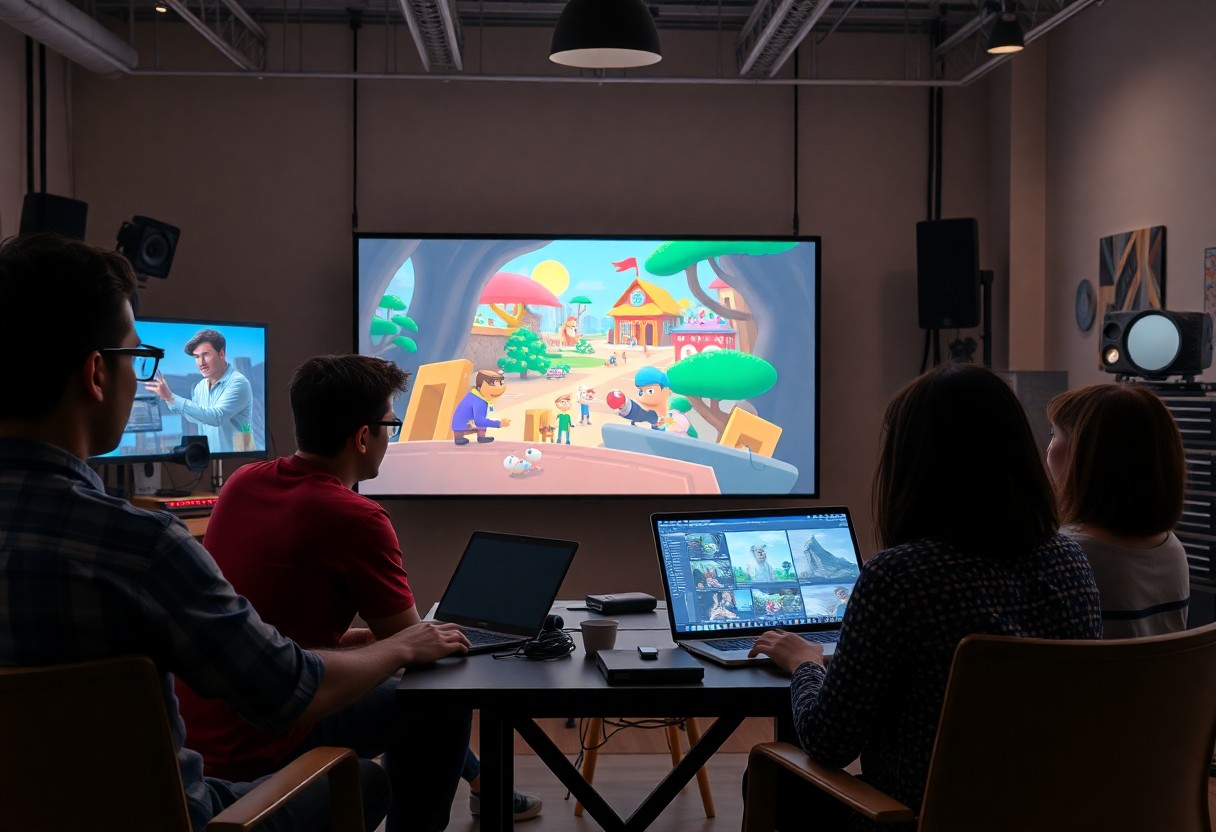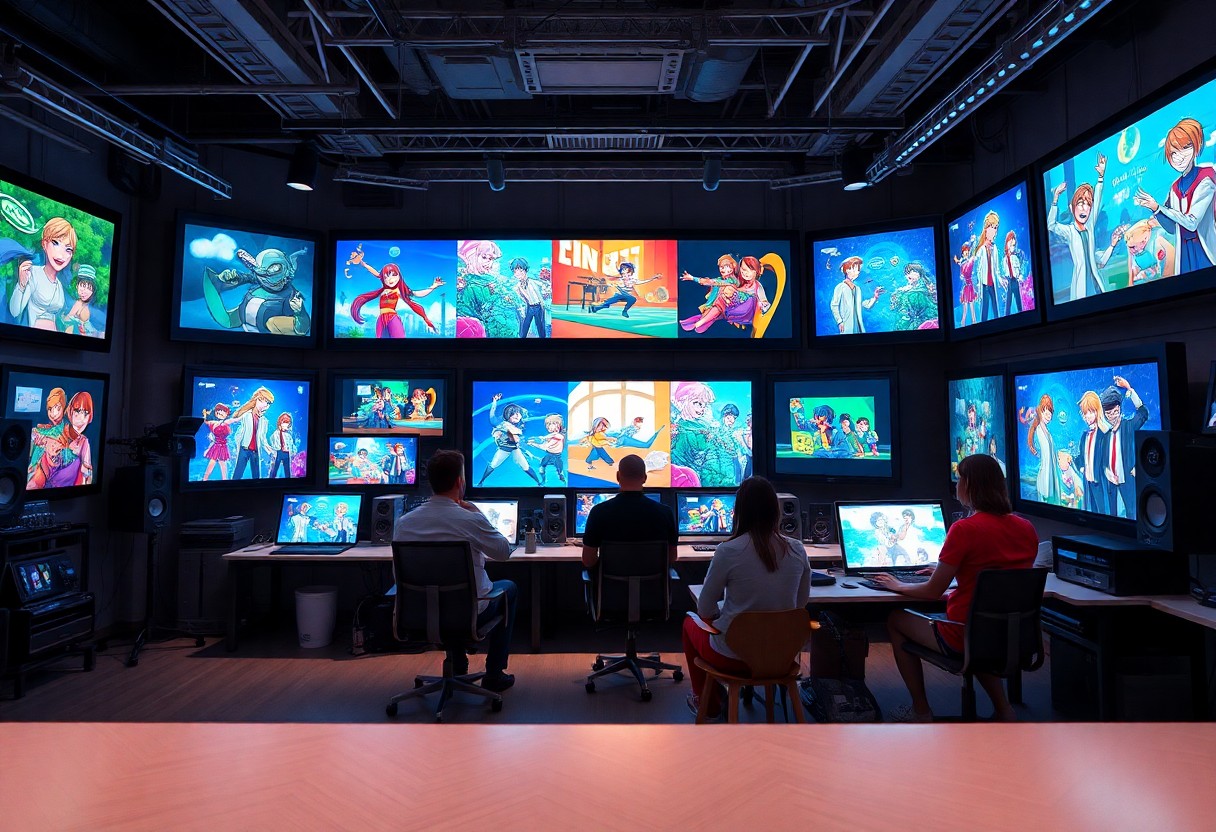
Aug 06, 2025
The Art of Storytelling Through Animation – Tips
Just like any great story, animation holds the power to captivate and engage audiences through compelling visuals and narratives. In this post, I will share insights from the Animaxon Team that will help you enhance your storytelling skills. You will learn how to create dynamic characters, convey emotions effectively, and utilize visual language to elevate your stories. These tips can transform your approach to animation and ultimately make your work more resonant with viewers. Join me as we look into the art of storytelling through animation!
Key Takeaways:
- Engage the audience by establishing emotional connections with characters and narratives.
- Utilize visual elements and animation techniques to enhance storytelling and convey deeper meanings.
- Prioritize pacing and timing in animation to maintain audience interest and deliver impactful moments.
- Foster collaboration within the team to blend diverse perspectives and creative ideas for richer storytelling.
- Iterate and refine your story based on feedback, continuously improving clarity and engagement.
Crafting Emotional Arcs in Animated Narratives
Building emotional arcs within your animated stories invites viewers to engage deeply. A powerful narrative often entails a journey that aligns with the audience’s sentiments – one that fluctuates between joy and sorrow, tension and release. I encourage you to map out your character’s emotional ups and downs, allowing their experiences to resonate with viewers. By introducing relatable challenges and victories, you can foster empathy and connection, making your characters’ growth feel meaningful and impactful.
The Importance of Relatable Characters
To create authentic emotional arcs, your characters must resonate with your audience. As I explore into their motivations, fears, and dreams, I aim for traits that mirror real-life experiences. For instance, a character struggling with self-doubt can evoke strong sympathy if their journey leads to self-acceptance. By making them relatable, I ensure that viewers see themselves reflected, fostering a deeper attachment and investment in their journey.
Building Tension and Resolution
Effective storytelling thrives on a balance of tension and resolution, which can be heightened through animation. Highlighting your characters’ struggles with compelling visuals and sound design contributes significantly to this dynamic. A well-timed crescendo during a fight scene or a gentle lull in a touching moment can amplify emotional stakes. This interplay not only keeps the audience on the edge of their seats but also leads to satisfying resolutions that provide closure. As the story unfolds, layering obstacles and emotional highs entwines viewers deeper into the narrative, transforming mere scenes into an absorbing journey.
In practice, this means strategically placing moments of conflict that challenge your characters, such as a poignant breakup or an unexpected betrayal. I’ve found that these moments need to be followed by resolutions that either serve to uplift the spirit or provide a stark contrast to the initial tension. For example, an uplifting reunion following a conflict can leave a lasting impact and a sense of fulfillment, while a poignant ending can provoke thought and reflection. The key lies in not just having an ending, but in crafting an *experience* that resonates long after the last frame fades away.

Visual Language: The Silent Storyteller
Visual storytelling in animation relies heavily on the concept of visual language, which conveys emotions and narratives without uttering a single word. Every frame is crafted to evoke feelings, guide viewer perception, and create connections. Thoughtful design choices, such as character expressions and background details, articulate deeper meanings and enhance the storytelling experience. I strive to create a harmonious blend of visuals that not only tell the story but also resonate with the audience on a personal level. Your animation can speak volumes through careful attention to the unspoken aspects of visual communication.
Color Theory and its Emotional Impact
The impact of color theory in animation cannot be understated. Colors evoke specific emotions, set the atmosphere, and even guide the audience’s understanding of a character’s intentions or moods. For instance, warm hues like reds and oranges can generate feelings of excitement or anger, while cooler tones like blues and greens can instill calmness or sadness. By intentionally selecting color palettes, you create a richer emotional landscape that deeply engages viewers and enriches their overall experience.
Composition Techniques that Captivate
Utilizing composition techniques is vital for grabbing and holding the viewer’s attention. Techniques like the rule of thirds, leading lines, and framing can structure your scenes effectively. I often employ these elements to create a sense of balance and intrigue, directing the audience’s gaze to focal points. For instance, using leading lines can guide viewers to key moments or characters, enhancing their understanding of the narrative flow while maintaining visual interest. Effective composition doesn’t just organize visual elements; it plays a crucial role in storytelling, imparting meaning and evoking emotion through spatial relationships.
By implementing composition techniques, you enhance not just the aesthetic quality of your animation but also the narrative clarity. The rule of thirds, for instance, places key elements along intersecting lines, making scenes more dynamic and engaging. This can create tension or draw focus, which in turn fosters a deeper emotional connection. Similarly, leading lines can manipulate how an audience’s eye traverses a scene, leading them through the story seamlessly. When I meticulously arrange every element in a frame, it empowers me to tell a compelling story that resonates with viewers long after they’ve finished watching. Embracing these techniques will undoubtedly elevate your animation to new heights.
The Role of Sound in Enhancing Storytelling
The integration of sound in animation plays a pivotal role in shaping the overall narrative. Through carefully curated sound effects, ambient noise, and musical scores, you can transform an ordinary scene into an emotionally charged experience. The sounds you choose amplify the tension, excitement, or calmness of your story, affecting how viewers perceive and connect with your characters and settings. From subtle background music to impactful climactic sounds, every audio element serves the story, enriching the viewing experience.
The Power of Sound Design and Music
Sound design and music can elevate storytelling by meticulously constructing an aural landscape that resonates with audiences. The right sound effects punctuate actions, while an evocative score can stir emotions and enhance the depth of your narrative. For example, a subtle melody may evoke nostalgia, while a crescendo can create suspense. Each sound forms a thread that weaves through your story, guiding the viewer’s emotional journey and amplifying the visuals on screen.
Voice Acting: Breathing Life into Characters
Voice acting is another vital aspect of animation that infuses your characters with personality and depth. Through voice modulation, actors can convey emotions that written text often cannot capture. Think about iconic animated characters; their distinct voices make them memorable. The nuances of tone, pitch, and pacing breathe life into the dialogue, allowing characters to resonate with the audience on a deeper level.
The impact of expert voice acting can’t be overstated. A skilled voice actor can deliver a range of emotions within a single line, enhancing the narrative’s authenticity. Take, for instance, the powerhouse performances of actors like Robin Williams as the Genie in Disney’s “Aladdin” or Tom Hanks as Woody in “Toy Story.” Their voices create an immediate connection with the audience, emphasizing the importance of choosing the right voice to match your character’s personality. By investing in talented voice actors, you can significantly enrich your storytelling and foster an emotional bond between the audience and the animated characters.
Balancing Humor and Depth: Striking the Right Tone
Finding the sweet spot between humor and depth can be a game-changer in animation. I’ve noticed that the best animated stories not only entertain but also resonate on a deeper emotional level. It’s all about crafting moments where laughter paves the way for reflection. By doing this, animators can create a rich experience that captivates diverse audiences. Combining lighthearted elements with poignant themes can leave a lasting impression, making your narrative both memorable and impactful.
Techniques for Effective Humor in Animation
Utilizing visual gags, clever dialogue, and quirky character traits can enhance humor in animation. Think of emotional contrasts or an unexpected twist; these techniques can provoke genuine laughter. Additionally, the timing and pacing of jokes play a vital role in their effectiveness. A well-timed visual punchline or a witty character response can elevate a scene significantly, making the humor not only relatable but also unforgettable.
Weaving Serious Themes within a Lighthearted Narrative
Integrating serious themes within a lighthearted narrative requires finesse and thoughtfulness. Through my experiences, I’ve found that humor often serves as a bridge to deeper discussions, allowing audiences to confront heavy topics in a softer manner. Take the example of animated films like “Inside Out,” which cleverly tackles emotions and mental health while keeping the tone playful and engaging. This balance creates a safe space for viewers to explore complex ideas without feeling overwhelmed.
It’s fascinating how vibrant animation can approach serious subjects with a sprinkle of humor. For instance, characters grappling with loss might relay their journey through comedic mishaps, allowing audiences to connect with their struggles without the heaviness often associated with such topics. Creating multifaceted characters who experience real-life challenges, paired with humor, not only draws empathy from viewers but also encourages them to reflect on their own experiences. Allowing laughter to coexist with important lessons can foster a deeper understanding, proving that even tough subjects can be approached with a light touch.
Transformative Lessons from Iconic Animated Works
Animated classics have the power to mold our perspectives and storytelling approaches. Films like “The Lion King” and “Toy Story” aren’t just beloved for their characters; they offer profound life lessons about love, loss, and friendship. By dissecting these narratives, I’ve found threads of universal truths woven within their vivid tales, showcasing how impactful storytelling can transcend generations and cultures alike. This lens encourages us to recognize and embrace the transformative potential animation holds to convey deep emotional experiences.
Analyzing the Storytelling Techniques of Industry Classics
Examining classics such as “Spirited Away” reveals a blend of magical realism and character development that captivates audiences. These films often utilize visual motifs—like Chihiro’s journey in “Spirited Away,” reflecting personal growth through vibrant visuals and rich symbolism. The seamless integration of sound and art enriches the narrative, turning each frame into a dynamic storytelling tool, which I find to be a vital aspect of effective animation.
The Cultural Impact of Animation in Storytelling
The cultural resonance of animation is profound, shaping societal norms and expectations. Animated films bridge gaps across cultures by expressing complex themes in relatable ways. The success of films like “Coco” exemplifies how animation can celebrate heritage and family, resonating with audiences globally. This cultural dialogue not only entertains but also fosters understanding and empathy in an increasingly fragmented world, making animation a pivotal force in modern storytelling.
Animation has the unique ability to reflect and influence societal values. For example, the portrayal of strong female leads in movies like “Frozen” and “Moana” challenges traditional gender roles, inspiring young viewers to embrace their individuality. These narratives empower audiences by providing relatable characters who face obstacles and grow. This kind of representation is impactful, as it plants seeds of empowerment and possibility in the hearts of children, encouraging them to pursue their dreams and challenge societal expectations. The cultural significance of animation extends beyond mere entertainment, embodying a powerful tool for change and connection.
Conclusion
With these considerations from the Animaxon Team, you can elevate your storytelling skills in animation. I believe that embracing the principles of character development, emotional engagement, and visual aesthetics will enhance your narratives. By experimenting with different styles and techniques, you can effectively convey your unique story. My hope is that you feel inspired to create compelling animated tales that resonate deeply with your audience, unlocking the full potential of your artistic voice.
FAQ
Q: What are the key elements of storytelling in animation?
A: The key elements of storytelling in animation include a compelling plot, well-developed characters, emotional engagement, visual style, and pacing. A strong narrative arc keeps the audience interested, while relatable characters evoke empathy. Additionally, the choice of animation style can enhance the story’s mood, and the pacing must align with the emotional beats to create a cohesive experience.
Q: How can I develop relatable characters in my animated story?
A: To create relatable characters, start by giving them distinct personalities, backgrounds, and motivations. Conduct character sketches that include their goals, conflicts, and relationships with other characters. Also, ensure that they experience growth throughout the story. Realistic traits and flaws can help audiences connect more deeply with these characters.
Q: What are some effective ways to convey emotions through animation?
A: Emotions can be conveyed through various techniques, including facial expressions, body language, and color schemes. Paying attention to certain animation principles, like exaggeration for comedic moments or slow movement for dramatic ones, allows for a more impactful delivery. Additionally, sound design, music, and voice acting play significant roles in enhancing emotional resonance.
Q: How does pacing impact storytelling in animation?
A: Pacing is necessary as it dictates the rhythm of the story. A balanced pacing allows viewers to absorb important moments, while also maintaining their interest during action scenes. This includes knowing when to accelerate for tension and when to slow down for emotional reflection. Using techniques such as cuts and transitions can help control the pacing effectively.
Q: What resources can I explore to improve my animation storytelling skills?
A: There are various resources available for improving storytelling skills in animation. Books about narrative structure and character development, online courses on animation techniques, and workshops led by industry professionals can be highly beneficial. Additionally, studying successful animated films or series and analyzing their storytelling methods provides valuable insights and inspiration.




